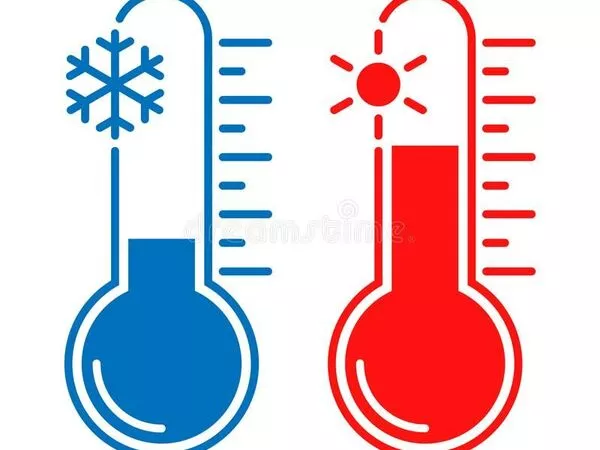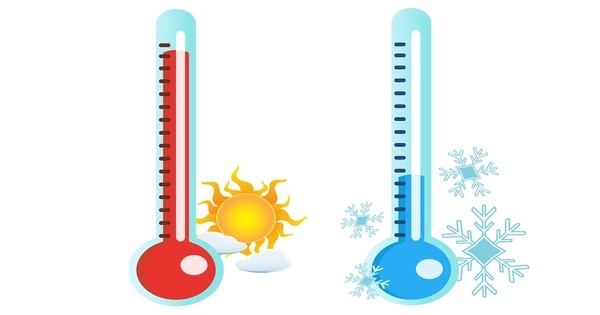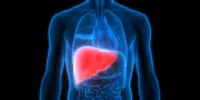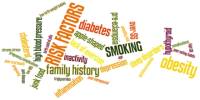Both hot and cold environments cause a stress response in the human body, which can lead to cardiovascular problems. Physiologist Justin Lawley of the University of Innsbruck’s Department of Sport Science and colleagues recently conducted scientific research on both factors. The findings, which were published in the journals Scientific Reports and Experimental Physiology, are especially pertinent in light of the current global crises.
Climate and energy crises are currently among the most pressing challenges of our time, with direct physical consequences for people’s health. For example, the climate crisis is causing more frequent, longer, and more intense heat waves, which are responsible for more deaths than natural disasters. Moreover, the energy crisis is causing a rise in energy costs and forcing many households to heat their homes less often or not at all.
The physiological responses to a simulated heat wave and cold ambient temperatures have now been investigated by Justin Lawley, together with his research group, the Laboratory of Exercise and Environmental Physiology, and international scientists in two studies – the focus was on the cardiovascular system. “In both studies, we replicated real-world environmental temperatures the body might be exposed to and were able to show physiological responses that could help explain known seasonal variations in cardiovascular deaths,” explains Lawley.
We observed that when the entire surface of the body is cooled, blood pressure increases mainly due to an increase in vascular resistance of the skin, although there was also a slight reflex increase in resistance of the blood vessels inside the skeletal muscle.
Justin Lawley
Heat study
Lawley’s group collaborated with colleagues from Slovenia as part of the Horizon 2020 Heat Shield project to investigate how heat waves affect the health of industrial workers. Seven male participants worked in a controlled laboratory setting for nine consecutive regular workdays.
Normal summer temperatures for Central European conditions ranged from 25.1 to 25.7 degrees during work and 21.8 to 22.8 degrees during rest periods on the first and last three days. The heat wave was represented by days four through six; during this time, researchers created ambient temperatures ranging from 35.2 to 35.8 degrees during work periods and 25.5 to 27.1 degrees during rest periods, including while sleeping at night. Participants completed daily tasks to simulate typical industrial work throughout the duration of the study.
“We used a protocol in this study that simulates current heat wave conditions in combination with orthostatic stress, which means changing posture, to determine cardiovascular and thermoregulatory stress in industrial workers,” Lawley describes. The results show that even relatively mild heat waves cause an increase in core and skin temperatures and an increase in skin blood flow. While these physiological reactions help the body from overheating at rest, during standing the body must now defend both internal temperature and maintain blood pressure to prevent fainting, which puts an extra strain on the cardiovascular system.

Interestingly, many of these responses persisted after the heat wave was over, suggesting a residual effect of the heat wave. “These responses reflect the stress on the cardiovascular system that industrial workers face during heat waves, which can lead to heat illness, fainting, and even potential death due to accidents or serious medical complications in persons with underlying cardiovascular disease,” Lawley points out.
Cold study
In another study, Lawley and a team of eleven researchers investigated the effect of mild cold exposure on the cardiovascular system, with a particular focus on the mechanisms responsible for the increase in blood pressure. In addition to Innsbruck researchers, scientists from the United Kingdom and Canada were involved.
Because avoiding a rise in blood pressure in the cold is critical, the researchers wanted to see if the increase in vessel resistance (i.e. vasoconstriction) was caused by a change in blood flow in the skeletal muscles or simply the skin. In a laboratory at the Department of Sport Science at the University of Innsbruck, the researchers cooled the skin temperature of 34 test subjects from a normal 32 to 34 degrees to about 27 degrees with ten degrees of cold air – on one occasion the entire body was cooled, on another only the face was cool.
“We observed that when the entire surface of the body is cooled, blood pressure increases mainly due to an increase in vascular resistance of the skin, although there was also a slight reflex increase in resistance of the blood vessels inside the skeletal muscle. However, importantly, when only the face was cooled, we saw a very similar increase in blood pressure that was due to a reflex increase in vascular resistance of the skin throughout the whole body,” Lawley describes.
As a result, the researchers were able to demonstrate that the mechanism(s) responsible for the rise in blood pressure during cold exposure differ depending on which parts of the body are cold. These data are important for educating the public about the potential negative consequences of cold exposure because, contrary to popular belief, cold is more dangerous to the body than heat.
“It doesn’t take sub-zero temperatures – as you might think – to cause serious reactions in the body, which will become common for many people unable to heat their homes during the energy crisis. While people typically know to wear warm clothing to protect the skin of their body, arms, and legs, we were able to show that protecting the face is equally important even in a mild ambient temperature of ten degrees,” Lawley continues.
Extreme effects
Both studies show that extreme weather conditions can have a significant impact on our cardiovascular system. While the negative health effects of heat waves will worsen as a result of the climate crisis, it is especially surprising that even cold temperatures of 10 degrees can have significant negative effects on our cardiovascular system, even in young people who participated in these studies. Future research that extends these findings to our aging population and those with pre-existing medical conditions will undoubtedly help reduce the risk of these new environmental challenges.
















